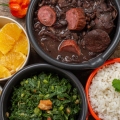Credit picture Vecteezy
Hikers and pilgrims visiting the majestic trails of the Andes often quench their thirst with a cool glass of chicha. This legendary beverage tells a story far older than any of the modern Andean countries, weaving its way through ancient empires and into the complex fabric and stark contrasts of modern South American life.
The exact origins of chicha are still the matter of debate, and even controversy. Some authors claim its roots are to be found in the Caribbean, Colombia, Panama, or even Central America. Be that as it may, one thing is certain: the tradition of brewing fermented beverages from indigenous plants and tubercules dates far back in South American history. And in Bolivia, chicha carries the legacy of the mighty empires that once ruled the Andes.
Empires fueled by tradition

For the Inca and pre-Inca civilizations, chicha was more than just a drink. Like beer in Mesopotamia and Egypt, this brew played a central role in economy, weaved into the very fabric of social and political life. Large-scale chicha production was often controlled by the state and used to reward labor, cement alliances, and honor the gods.
Archaeological evidence suggests that vast quantities of chicha were brewed for celebrations and ceremonies, helping to maintain both (vertical) order and (horizontal) community in sprawling Andean empires.
From seed to sip, an ancient process
Bolivian chicha often (if not always) stars maize (corn), the quintessential American crop, grown and revered in the Andean highlands for millennia. The traditional preparation process is a testament to its age. Corn kernels are soaked until they germinate, then ground and boiled.
And here’s where it gets fascinating: In ancient times, this mash was chewed to start the fermentation process using enzymes found in saliva. Today (thankfully, some would say) more modern methods are used –although some variants of chicha are still fermented following the original chewing-and-spitting method in some other regions of the continent. That is the case of the Venezuelan Amazonian kachire, a stout beer made from boiled, chewed, and spat yuca. The fermented mixture is strained and often flavored with spices and sugar, resulting in a slightly cloudy and refreshing beverage.
Lowland chicha may contain sweet manioc, plantains, or bananas, showcasing Bolivia’s regional flavors. It can be mildly fermented for a low alcohol content, or fully fermented for a stronger kick.
More than just a drink
Drinking a glass of chicha means partaking on the living continuation of an ancient tradition. A taste from a pre-hispanic past, it is a drink for celebrations, festivals, or simple moments shared with friends. In bustling chicherías all throughout Bolivia, locals gather to enjoy its unique flavor.
So on your next adventure, whether trekking through the Andes, covering the Bolivian legendary Route of the Colonial Convents, or wandering through busy local markets, proudly raise a glass of chicha. With each sip, you’ll connect with centuries of history –a delicious journey from the empires of old to the heart of modern Bolivia.





